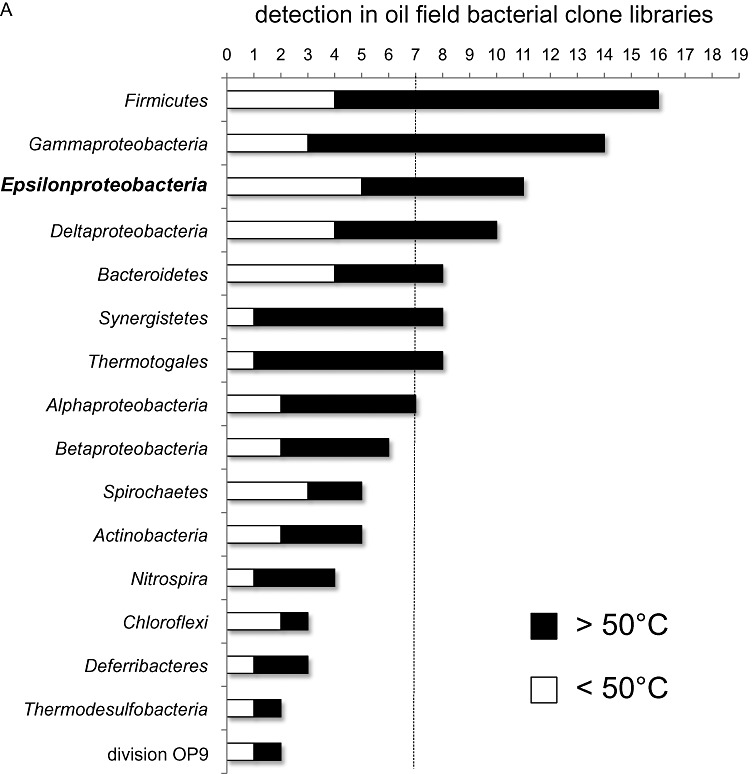Fig 6.


Results from 19 published bacterial clone libraries (references are given in B) from subsurface fossil fuel reservoirs were evaluated for the occurrence of dominant taxa. Seven of the habitats were low-temperature environments (reported as < 50°C in situ) as indicated by the dashed line in (A), and 12 were high-temperature oil reservoirs (> 50°C). (A) shows that Epsilonproteobacteria are the third most frequently occurring group overall and were detected in five out of seven low-temperature systems. The abundance of Epsilonproteobacteria in these oil field clone libraries is summarized in (B), which indicates that Epsilonproteobacteria are particularly abundant in low-temperature oil fields in western Canada. The hatched bar indicates the discrepancy in results reported from the Kuji oil storage cavity (Watanabe et al., 2000; 2002) as described in the Introduction.
